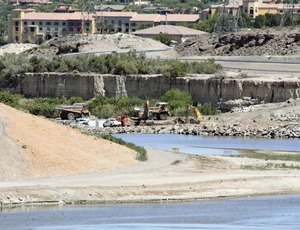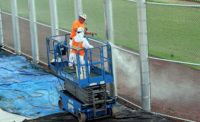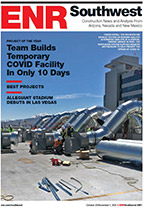

Few visitors to Las Vegas are likely to realize they are using the same water as on their previous visit. The city and its environs are one of the few U.S. metro areas that reclaim nearly every drop of water that goes down the drain. After it is processed at two treatment plants south of The Strip, reclaimed water enters the Las Vegas Wash—an urban river that conveys to Lake Mead the water supply as well as stormwater, groundwater seeps and runoff.
The practice of reclaiming water began in the 1950s. As the area's population increased over the decades and flows into the wash increased, erosion became a key issue. Specifically, its banks began to recede, which resulted in the deposition of more than 22 million cu yd of sediment into the lake.
Bank rehabilitation began in 1989. The effort also involved creating weirs to slow the river's flow. Much of the material used to build up the weirs was gathered from the demolition of some of the area's hotel properties, including the MGM, Stardust and Caesar's Palace.
As of April, the Southern Nevada Water Authority has completed 12 miles of bank protection and installed 18 of 21 weirs. Approximately 480,000 cu yd of recycled concrete from imploded casinos, parking garages and other structures have been used. The material has been donated, with the agency paying only $10 per cu yd for its pickup and transportation. More than $170 million has been invested to date to stabilize the wash.




